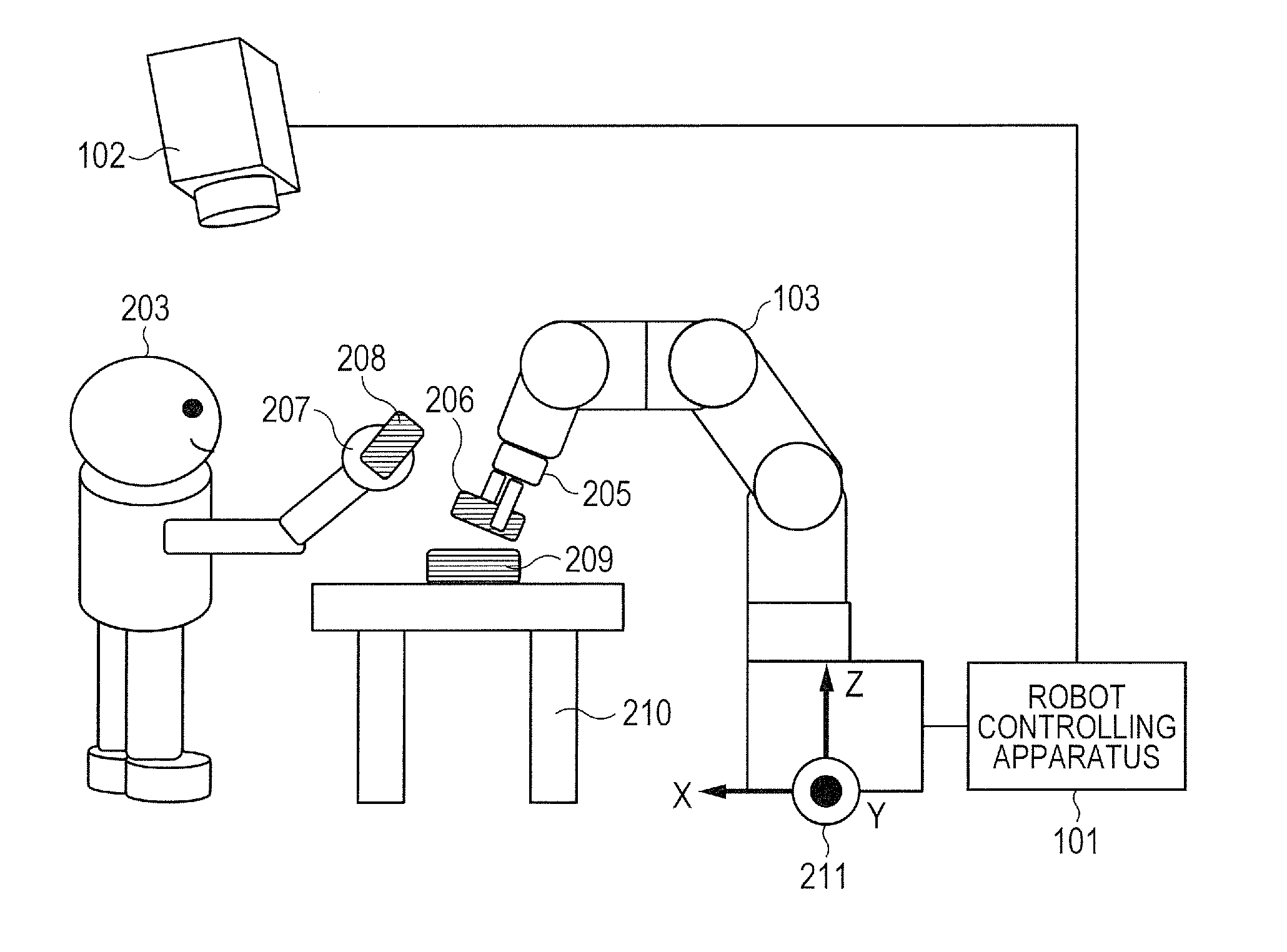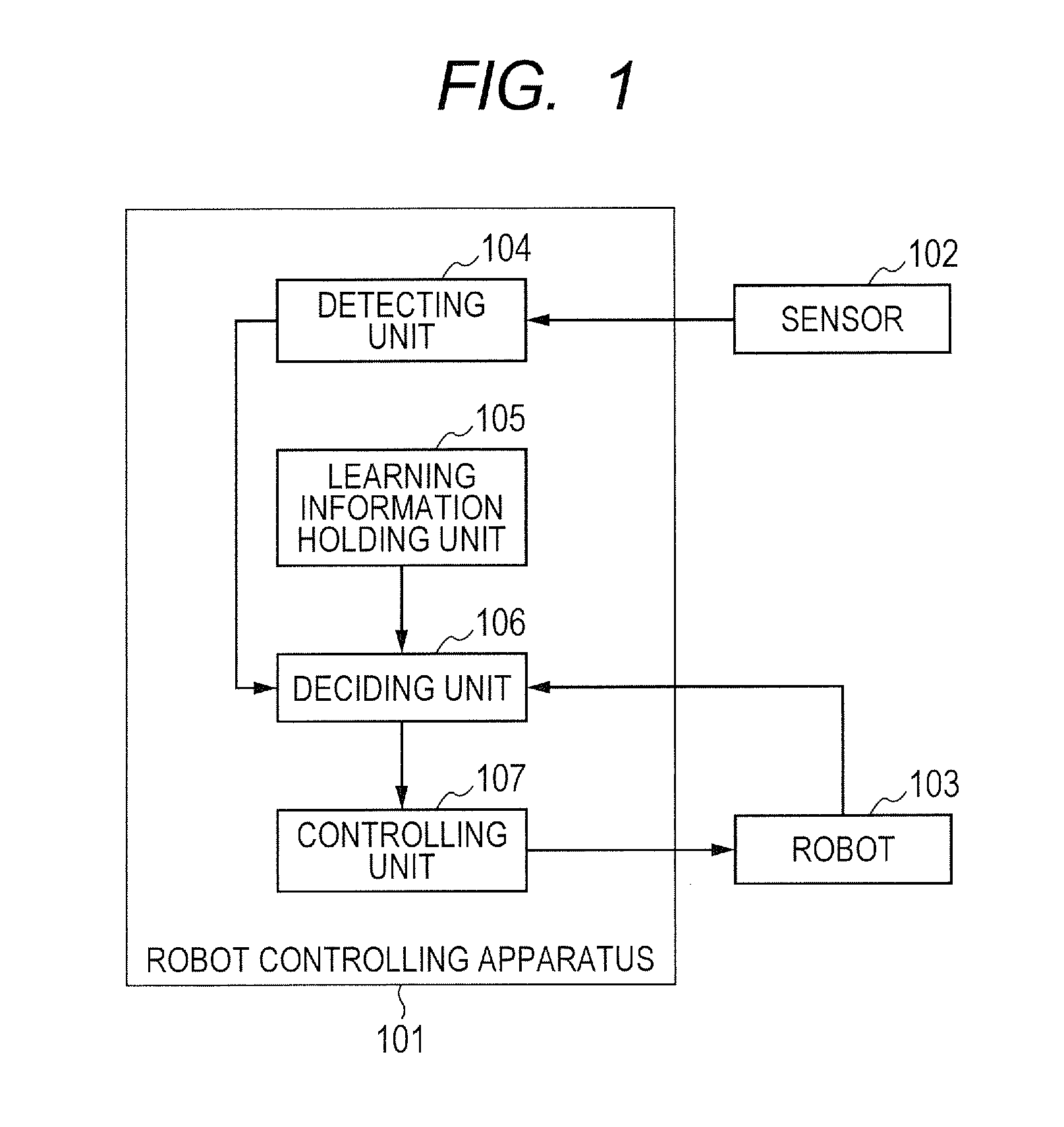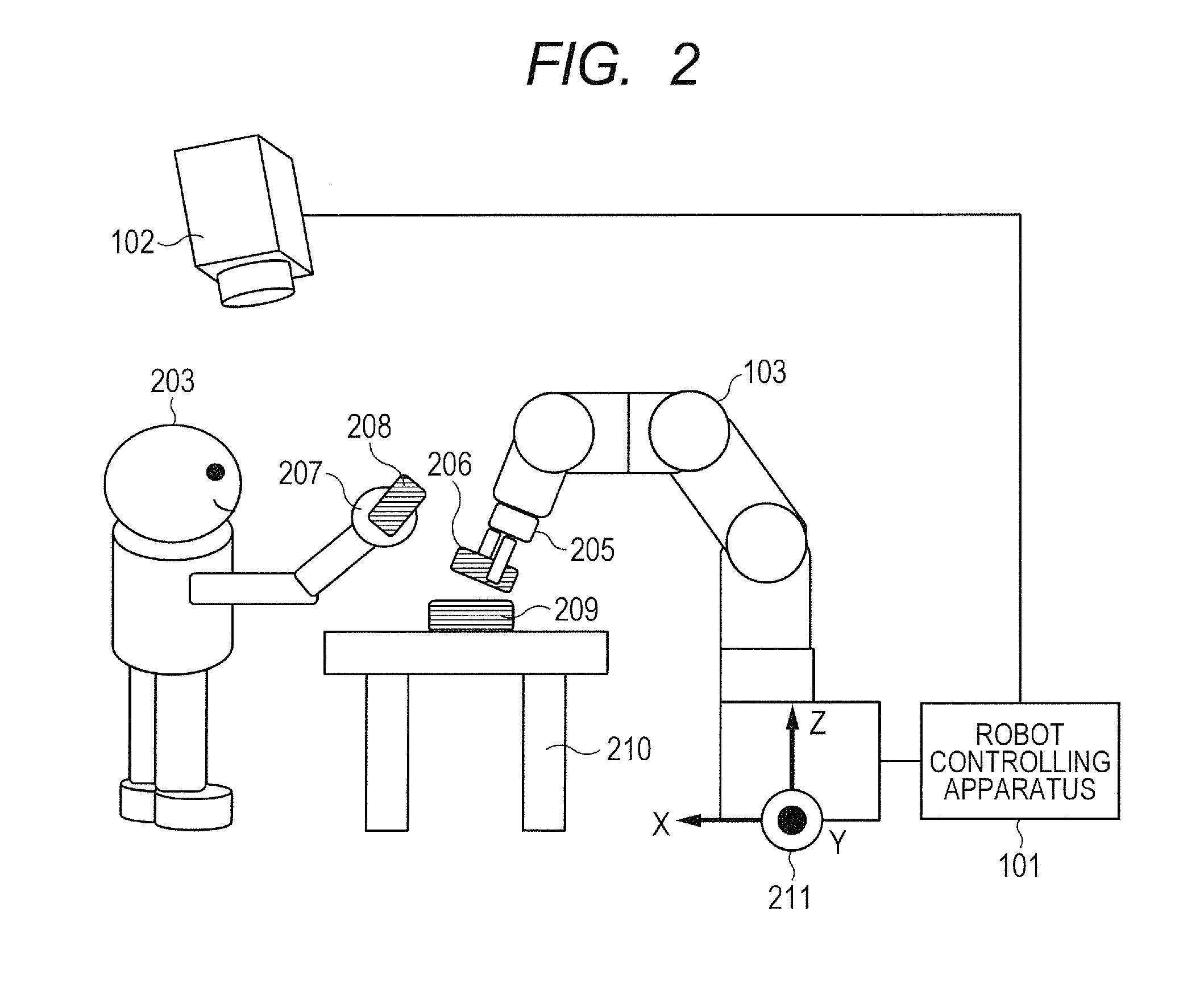Robot controlling apparatus and robot controlling method
- Summary
- Abstract
- Description
- Claims
- Application Information
AI Technical Summary
Benefits of technology
Problems solved by technology
Method used
Image
Examples
first embodiment
[0025]A robot controlling apparatus according to the present embodiment uses, in a case where a robot and a worker perform work in a space where the robot and the worker coexist, learning information obtained by previously learning time-series states of the robot and the worker in the work, More specifically, it a probability that the time-series states of the worker and the robot currently performing the work are the learned time-series states of the worker and the robot is high, the robot controlling apparatus controls the robot to continue the operation. On the other hand, if the probability that the time-series states of the worker and the robot currently performing the work are the time-series states of the worker and the robot at the time of learning is low, the robot controlling apparatus controls the robot to stop or decelerate the operation. As just described, by controlling the robot with use of the previously learned information, it aims to improve productivity while secu...
second embodiment
[0102]As well as the first embodiment, the robot controlling apparatus according to the present embodiment uses, in case of performing the work in the space where the robot, and the worker coexist, the learning information obtained by previously learning the time-series states of the work of the robot and the worker. Then, if a probability that the time-series states of the worker and the robot currently performing the work are the time series states of the worker and the robot at the time of learning is high, the robot is controlled to continue the operation (work). On the other hand, if the probability that the time-series states of the worker and the robot currently performing the work are the time-series states of the worker and the robot at the time of learning is low, the robot is controlled to stop or decelerate the operation.
[0103]Besides, in the second embodiment, after controlling to stop or decelerate the operation of the robot, return of the work is notified to the worke...
third embodiment
[0118]As well as the first embodiment, the robot controlling apparatus according to the third embodiment uses, in case of performing the work in the space where the robot and the worker coexist, the learning information obtained by previously learning the time-series states of the work of the robot and the worker. Then, if a probability that the time-series states of the worker and the robot currently performing the work are the time-series states of the worker and the robot at the time of learning is high, the robot is controlled to continue the operation (work). On the other hand, if the probability that the time-series states of the worker and the robot currently performing the work are the time-series states of the worker and the robot at the time of learning is low, the robot is controlled to stop or decelerate the operation.
[0119]Besides, in the third embodiment, the robot controlling apparatus improves accuracy of the learning information by updating, while the work is being ...
PUM
 Login to View More
Login to View More Abstract
Description
Claims
Application Information
 Login to View More
Login to View More - R&D
- Intellectual Property
- Life Sciences
- Materials
- Tech Scout
- Unparalleled Data Quality
- Higher Quality Content
- 60% Fewer Hallucinations
Browse by: Latest US Patents, China's latest patents, Technical Efficacy Thesaurus, Application Domain, Technology Topic, Popular Technical Reports.
© 2025 PatSnap. All rights reserved.Legal|Privacy policy|Modern Slavery Act Transparency Statement|Sitemap|About US| Contact US: help@patsnap.com



